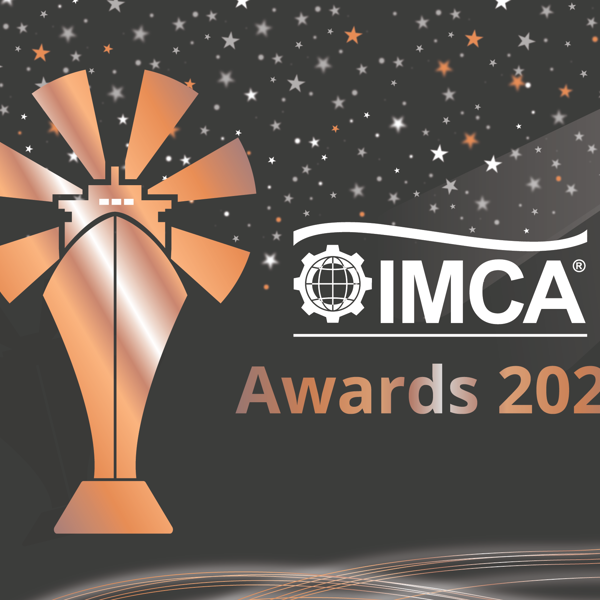On 9 October, IMCA held its 15th annual Lifting and Rigging Seminar at London’s Victory Services Club bringing together over 100 technical leads and decision makers to consider key developments in the use of high-value wire ropes and to collaborate on elevating safety standards and technical excellence in offshore operations.
The Seminar programme began with a detailed examination of wire rope integrity management (WRIM) fundamentals by IMCA’s Technical Adviser Jennifer Evans and Marine & Quality Manager Mark Ford. They outlined WRIM as a systematic approach encompassing the entire rope life cycle, necessary to mitigate the risks associated with failure. Delegates were reminded that IMCA’s LR001 Guidance specifies the six tools required to provide rope integrity assurance ranging from thorough examination and non-destructive examination to detailed fatigue evaluation.
The technical complexity of rope design was explored by Laura Lombardi of Usha Martin Italia, who showed how rope makers must navigate inherent trade-offs in design, such as balancing the need for increased diameter to prevent cut-in with the need for a reduced diameter to prevent side crushing. She emphasised that open discussion between maker and user is essential to properly prioritise functional requirements.
Providing an operator’s perspective, Pim Braspenning of Boskalis offered real world examples from the Bokalift 2, which performs over 200 heavy lifts each year with hook loads greater than 2,500 tonnes. Braspenning detailed their inspection regime, noting that while automated lubrication is efficient, inspecting the full 1,200-metre length of the boom hoist wire remains a challenge due to sensor access.
A significant portion of the day was dedicated to questioning whether current standards fully address modern offshore challenges. Sara Fletcher, WRIM Technical Specialist at Subsea7, presented a compelling session on the applicability of ISO 4309, the crane industry standard for wire rope inspection. Fletcher provided critical feedback using practical examples where ropes failed despite adherence to ISO 4309. She made a clear case for the need to use real life feedback to inform further development.
This theme continued in the workshops, where attendees acknowledged that ISO 4309 was not created with offshore wire ropes in mind, particularly when used by subsea cranes and A&R winches. Key takeaways focused on the need for rigorous root cause analysis and the practical reality that current tools cannot inspect the full wire length, necessitating a ‘slip and cut’ procedure to manage operational risk. Delegates also heard that as the sector has grown, crane heights have increased, which has added greater pressure to lifting systems.
The afternoon sessions focused on large scale engineering and alternative materials. Alberto Pegurri of Remazel Engineering discussed the vital subject of scaling up winches to safely approach pulling loads of 1,000 tonnes required by the new energy mix.
Roger Øvstetun from Kito Crosby outlined intelligent solutions for identifying wear in sheaves such as indication points that wear away with use. He also touched on the superiority of weld free blocks as well as the counterintuitive importance of doing destructive testing and working closely with rope manufacturers, which is sadly not the industry norm.
He was followed by Maciej Martyna, from Laboratorium LRM-NDE who discussed the challenges of rope crushing on a storage drum and how valuable magnetic rope testing can be for spotting defects.
Later, the comparative advantages of different slings were debated. Peter Smith of Saipem shared experience with cable laid slings and grommets, highlighting that they can be susceptible to damage like 'bird caging' and core rope protrusions, requiring highly planned, fully engineered lifts.
Conversely, Heerema’s Harry Creer presented a strong case for synthetics, proving that they can compete with steel components in many respects, and are now a growing part of Heerema’s tool arsenal.
Wrapping up the day, Mark Ford extended his appreciation for the productive discussions and thanked his co-organiser David Cannell, who, after leading the organisation of the Lifting and Rigging Seminar for many years since its inception, will step down from his role on the event’s working group at the end of the year.
“I’d like to extend my personal thanks to David for his excellent work in chairing the Seminar and for his support over the years,” Mark said. “His guidance and expertise were instrumental in ensuring we delivered another informative event for our community and I’m certain you’ll join me saying he will be sorely missed.”
Lifting and Rigging 2025 once again provided excellent technical direction and will help propel improvements across the industry, ensuring marine contractors maintain the highest safety and performance benchmarks worldwide.
IMCA would like to thank the sponsors of this year’s Seminar for their support – Brunton Shaw, Kito Crosby, Franklin Offshore, and Green Pin.











